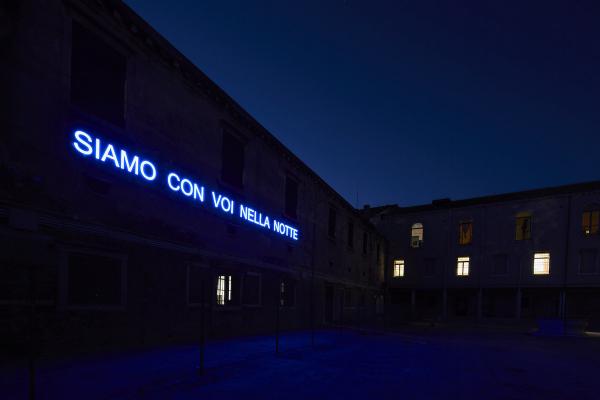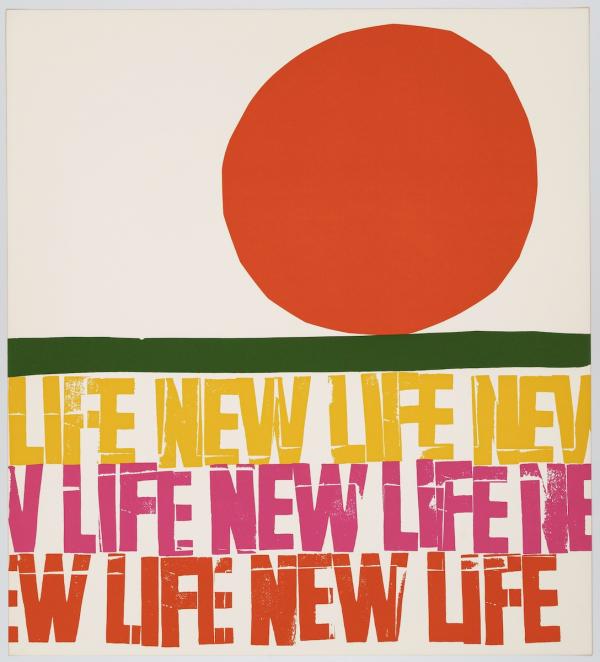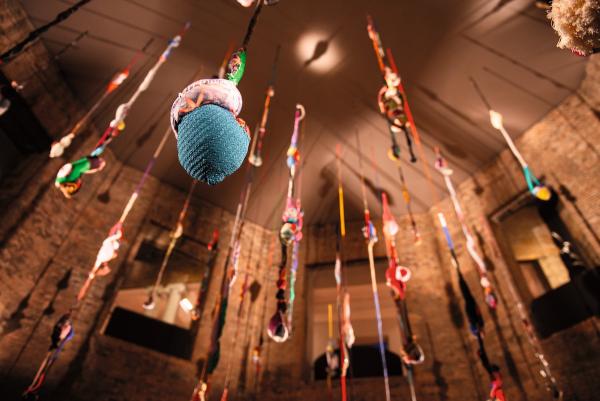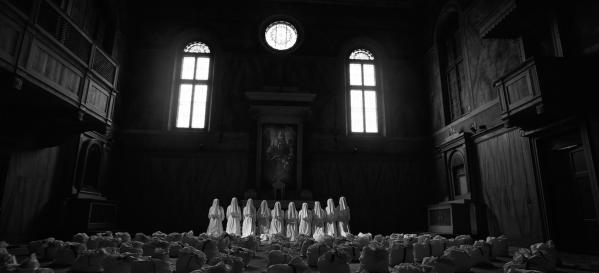The Vatican Pavilion has left its usual space at the Arsenale to cross the threshold into the women’s prison at the Giudecca, a typically ‘closed’ place that art has been able to open in an intelligent interrelation with the public of this 60th Biennale.
Con i miei occhi (With my eyes) is the title of the group show curated for the Vatican by Chiara Parisi, director of the Centre Pompidou Metz, and by Bruno Racine, director of Palazzo Grassi and Punta della Dogana. It brings together six artists and two internationally renowned collectives, who confront the issue of human rights and the figure of those who come last. Themes that are as topical as they are close to the mission of this pontificate. Ranging from installations of great emotional impact, such as Maurizio Cattelan’s work on the building’s façade or Sonia Gomes’ Symphony of hanging sculptures in the chapel, to the more traditional portraits of female prisoners and their loved ones by Claire Tabouret, and the direct involvement of female inmates who tell their stories through Simone Fattal’s enamelled plaques and in the short film shot by Saldana & Perego, this exhibition has certainly broken down a hitherto granitic barrier, as the curators themselves explain in this interview.
 How did the idea of such an unusual and, perhaps, also difficult space to organise and set up come about?
How did the idea of such an unusual and, perhaps, also difficult space to organise and set up come about?
CP: The realisation of the Vatican Pavilion has been surprisingly simple yet revolutionary. It illuminates the lives of the marginalised, forcing us to confront ourselves with those who have lost their freedom in that present moment. We have encountered nothing but welcome and a willingness to open the doors of the Giudecca to artists and visitors.
BR: The Vatican does not have its own art scene. It was therefore necessary to think about a new meaning for this pavilion and the choice of location has taken on the force of a strong message in itself.
 How did the inmates react to the initial proposal for direct involvement and how did the relationship with you curators and the artists evolve?
How did the inmates react to the initial proposal for direct involvement and how did the relationship with you curators and the artists evolve?
CP: The first meeting was in the room where the women meet their families. We were there to introduce the project; two groups facing each other, but now we are a community that is learning to make use of mediation to accompany visitors along the way.
BR: The first meeting with the inmates was unforgettable. They were really keen to participate in the project, encouraged by the prison management, which welcomed the idea with great enthusiasm. Each artist has imagined a specific way to involve the women: as actresses, writers, dancers, among other things.
Mark Bradford collaborated years ago with the same prison: from that experience came the glass shopping bags that the American artist has put on sale to subsidise the continuation of that collaboration. Do you think there will be continuity for some of the artists in the pavilion after this exhibition?
CP: Many artists of great quality have participated in projects and workshops over the years (for example, Rossella Biscotti and Pauline Jardin Curnier…). The Giudecca is a very fruitful place from an artistic point of view: the collaborations with the Pavilion artists will take place throughout the duration of the Biennale, and some projects will be on a long-term basis.

Bruno Racine, you have been directing two important Fondazione Pinault venues in Venice since 2020: what did you know about the Giudecca prison before this experience?
I got to know the jail through my wife, who every Thursday goes to buy vegetables at the Orto delle meraviglie, the vegetable garden cultivated by the inmates. Afterwards, I was able to visit the prison, which is a small world where the inmates have many different activities and have already collaborated with some art projects in the past.
Chiara Parisi, in the past you have also directed La Monnaie – the Mint – in Paris, opening it with ambitious exhibition projects relating to contemporary art: what are the similarities and differences with this other Venetian experience?
This has been a project that I will carry with me all my life and that has allowed me to explore new ways of making art and of how to create collaborative projects in a more intuitive way. And to understand even more the power of creativity that lives and survives in all contexts and is deeply connected to the nature of a human being.

Con i miei occhi (With My Eyes)
curated by Chiara Parisi, Bruno Racine
Carcere femminile della Giudecca / Giudecca women’s prison
until 24.11.2024
